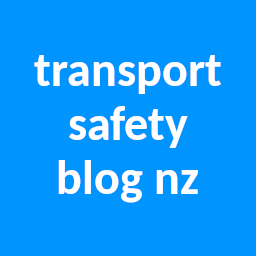It’s an inevitable reality that in any suburban area where a lot of traffic passes through, there are bound to be various safety issues. Much of this is due to roads being designed primarily for cars without any real thought for or consideration of other transport modes such as cycling and walking. In a city like Christchurch, it doesn’t take a lot of effort to discover that this is where there has been an imbalance in roading design for many years. Hence, the Accessible City programme and the cycleways have been attempts to redress this. It is regrettable that there is still too great an emphasis on car use and making roads for people to be able to drive as quickly as possible from one place to another without consideration of other factors. Intersection design reveals that unfortunate compromise when it becomes clear that intersections are the source of many accidents because reasonable safety is not provided for turning traffic off a major road onto a side road, for example.
Here is just a list of some of the possible factors that can cause problems at intersections and this is really just brainstorming without serious research:
- Lack of control of straight ahead traffic to permit safe right turns (uncontrolled intersections)
- Lack of right turn arrows at traffic lights
- Turning complex intersections into roundabouts instead of making them four way intersections with traffic lights.
- Having two intersections too close together, or intersections with more than four directions of traffic.
- Having two lanes at roundabouts instead of single lanes.
And that is just for intersections and cars. If we throw cycles into the mix, then there are a lot of issues for cyclists to be able to turn safety in the midst of faster moving traffic, or being able to go straight ahead without being cut off by left turning traffic. Even at traffic light controlled intersections, cyclists have to try and find somewhere safe to wait and cross between multiple traffic lanes. If we throw in pedestrians as well, a lot of intersections which are uncontrolled have limited crossing facilities. Crossing facilities between intersections are also limited. The problem is that as traffic flow increases, pressures are brought to bear on council staff to reduce restrictions to traffic flow, which means reducing the priority of pedestrian or cyclist safety features. There is therefore an obvious negativity that increases as the pendulum moves too far in the direction of private car use and not enough in the direction of public transport and active modes such as walking and cycling. The city becomes less livable and other social problems ensue. Most of the demand for more roads comes from people who want all the traffic to be put through less desirable areas as long as their highly desirable enclaves are protected at all costs with speed humps and all sorts of restrictions on traffic movement.
This article is an introduction to a series that will look at the most dangerous intersections in the city and the factors involved. What is a real concern as regards these safety issues is that the council describes the budget for safety improvements as “highly constrained”. Dig into this a bit deeper and we can find that of a list of the 100 most dangerous intersections, just one intersection on that list will be programmed for safety improvements each year. There need to be real questions asked about the overall budgets for roads including how much is being spent on roads overall and the percentage of this which is being allocated to safety improvements. As it can be seen it would take 100 years to address all of the intersections on the list and it is highly likely by the end of that time that there will be more intersections coming through that weren’t on the list before. In other words, safety is a moving target and it seriously needs a lot more money dedicated to it. But the biggest factor that will improve safety is to slow the continual increase in traffic and give people safe alternatives such as public transport, and also make the roads safer for pedestrians and cyclists which create much less congestion problems.
So that’s a good start to the introduction of this series and we’ll flesh out that a bit more by looking at two lists of the most dangerous intersections in Christchurch that TSBNZ has acquired recently.
